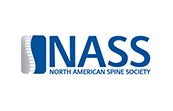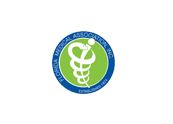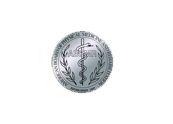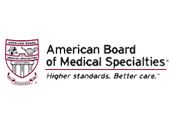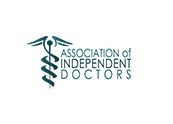Regenerative Injection Therapy With Platelet Rich Plasma
Regenerative Injection Therapy With Platelet Rich Plasma
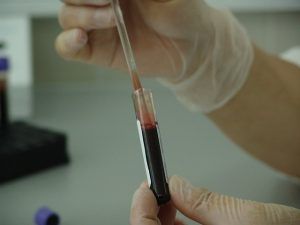
What is platelet rich plasma (PRP)?
Plasma is the liquid portion of your blood and is primarily composed of water, but also includes proteins, nutrients, and other elements that it can distribute throughout the body. Platelet Rich Plasma (PRP) is a sample of the patients’ own plasma that is ‘spun’ until it creates a complex mixture of blood cells and platelets that are able to mediate healing by supplying growth factors, and other bioactive compounds.
PRP is obtained by drawing a sample of blood from the patient and removing the red blood cells and plasma. This technology yields a concentration of platelets and growth factor concentrates that is 8 times greater than normal.
What conditions does this procedure treat?
PRP has been used for over 20 years in numerous surgical fields to enhance bone grafting, accelerate wound healing and reduce the risk of infection after surgery. In recent years, physicians have begun injection PRP to treat some of the following conditions:
- Tendinitis
- Rotator cuff tears
- Osteoarthritis of the Shoulder or Knee
- Hip Bursitis
Who is not a candidate for PRP therapy?
- Anyone with a blood borne Cancer (such as lymphoma or leukemia), not in remission for at least 5 years
- Other malignancies or blood borne diseases
- Current infection
- Patients using a high dosage of Coumadin
- Patients with cerebral palsy or Parkinson’s Disease
- Patients with multiple medical issues may not be good candidates
What can I expect during the injection?
Platelet-Rich Plasma Therapy is done in an exam room and takes less than an hour. The patient's blood is drawn and placed in a centrifuge for 15 minutes to concentrate the platelets. The platelet-rich plasma is then immediately injected under image guidance into the damaged tendon or joint. The PRP solution is injected immediately. It is never stored for injection at a later date.
Immediately after the injection, an inflammatory response is activated by the platelets. This then stimulates healing. For this reason, it is recommended that you not take any anti –inflammatory medications for one week before and two weeks after the injection. It is also recommended to not drink alcohol for a period of 24 hours after the procedure, and to avoid using ice over the injection site.

What can I expect following the injection?
Following the injection, an “achy” soreness is often felt at the site of injury. This soreness is a positive sign that a healing response has been set in motion. This effect can last for several days and gradually decreases as healing and tissue repair occurs. Patients are put on a program of relative rest followed by physical therapy for the first 6 weeks.
After about 6 to 12 weeks, patients are re-evaluated for improvement. Some patients with more difficult injuries may require more than one injection to achieve successful outcomes. The majority of PRP patients find that within 3-4 months they can return to most or all of the activities they were doing before the pain started.
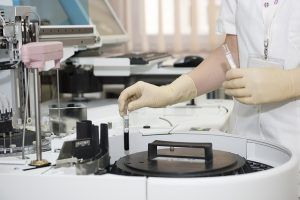
What is the cost of PRP treatment?
At the present time, insurance companies won’t pay for PRP therapy. The cost of PRP treatment varies based on number of injections you receive. A single injection costs $600 with subsequent injections in the same area for $500 each. Bilateral procedures are offered at a reduced rate ($400 x 2) if paid together.
Spine based injections are performed in a surgery center under fluoroscopy; A single injection costs $700 with subsequent injections in the same area for $600 each. Bilateral procedures are offered at a reduced rate ($500 x 2) if paid together.
Can I drive home after the PRP injection?
If you take any sedative (valium, versed, medications to reduce pain) before the procedure you will not be allowed to drive home. If no sedative is used for the procedure, you may drive yourself home after the injection.
Can I take my normal medication(s) before and after the injection?
Do not take anti-inflammatory medication such as Advil, Aleve, Motrin, Ibuprofen, Mobic, Naproxen, Nabumetone, or Diclofenac for 7 days prior to the injection and 6 weeks after the last injection. Tylenol/Acetaminophen is allowed.
Will I need to complete physical therapy?
Your physician may recommend physical therapy to help you regain your strength, mobility, and function. Typical physical therapy programs last between 4 to 12 weeks. Your insurance company usually covers physical therapy, but you should call your insurance company to confirm.
Do I need to schedule a follow up appointment?
Yes, the physician will want to see you back in clinic to check your progress. You will be asked to make a follow up appointment 6 weeks following the injection.
Does the treatment consist of injection or multiple injections?
For most cases, 1-3 injections is required at 4-6 week intervals.
What are the risks involved?
Clinical Research shows that PRP injections are extremely safe, with minimal risk for any adverse reaction or complication. Because PRP is derived from your own blood, there is no chance of having an allergic or immune reaction. In fact, side effects from PRP injection are extremely rare. The main risks include local infection at the site of injection (1% risk) and pain at the injection site.
